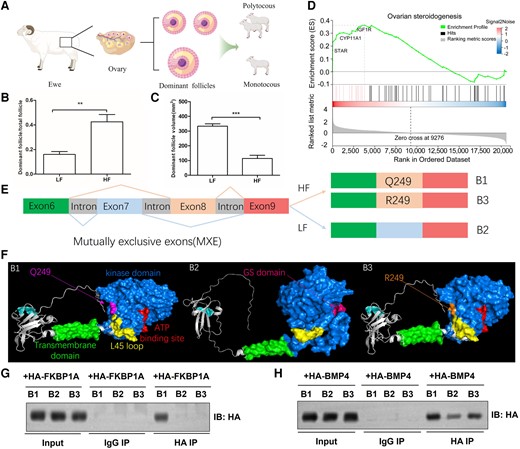Domestication and artificial selection during production-oriented breeding have greatly shaped the level of genomic variability in sheep. However, the genetic variation associated with increased reproduction remains elusive. Here, two groups of samples from consecutively monotocous and polytocous sheep were collected for genome-wide association, transcriptomic, proteomic, and metabolomic analyses to explore the genetic variation in fecundity in Tibetan sheep. Genome-wide association study revealed strong associations between BMPR1B (p.Q249R) and litter size, as well as between PAPPA and lambing interval; these findings were validated in 1,130 individuals. Furthermore, we constructed the first single-cell atlas of Tibetan sheep ovary tissues and identified a specific mural granulosa cell subtype with PAPPA-specific expression and differential expression of BMPR1B between the two groups. Bulk RNA-seq indicated that BMPR1B and PAPPA expressions were similar between the two groups of sheep. 3D protein structure prediction and coimmunoprecipitation analysis indicated that mutation and mutually exclusive exons of BMPR1B are the main mechanisms for prolific Tibetan sheep. We propose that PAPPA is a key gene for stimulating ovarian follicular growth and development, and steroidogenesis. Our work reveals the genetic variation in reproductive performance in Tibetan sheep, providing insights and valuable genetic resources for the discovery of genes and regulatory mechanisms that improve reproductive success.

The link below will guide you to the reading:

